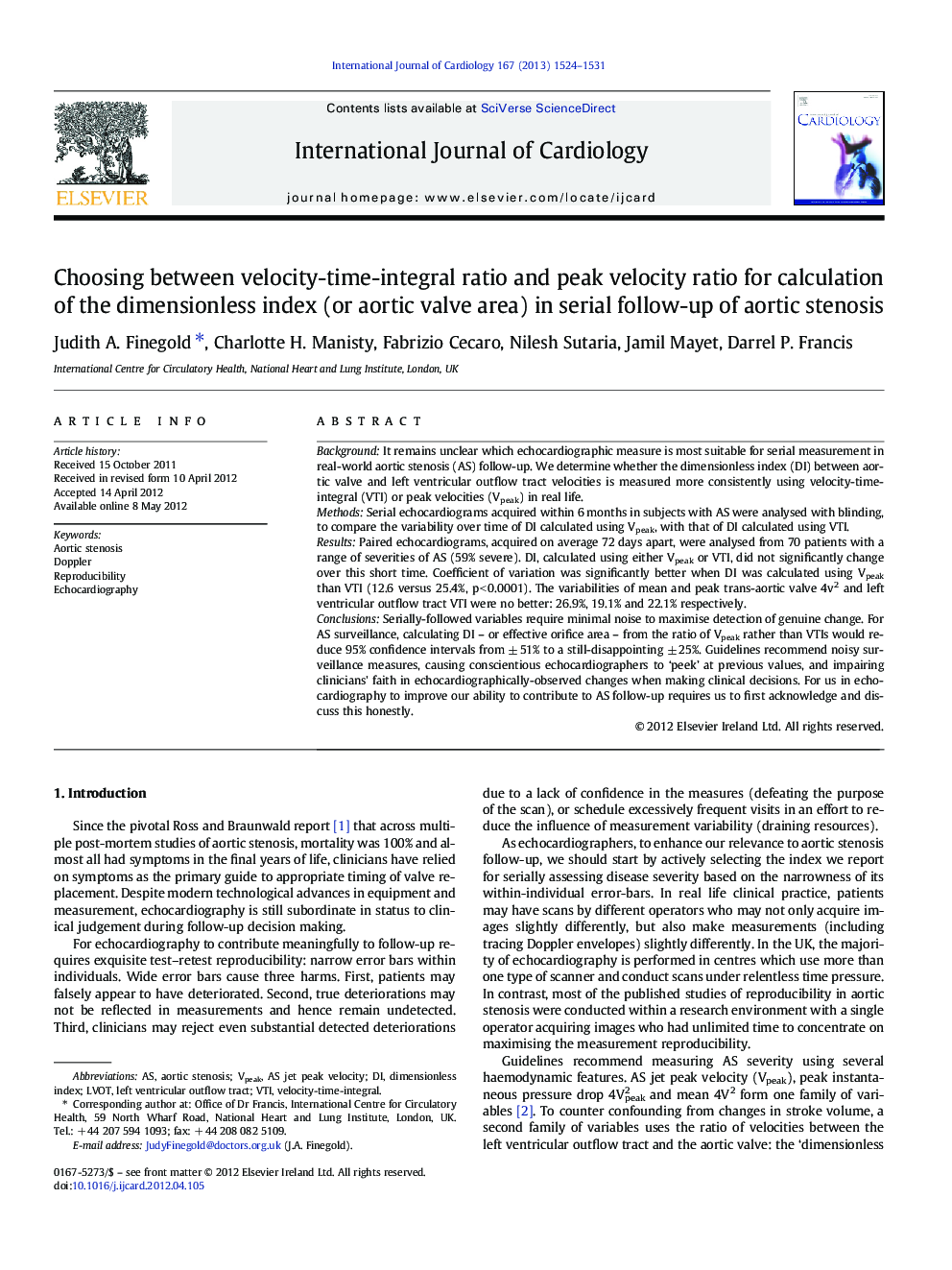| کد مقاله | کد نشریه | سال انتشار | مقاله انگلیسی | نسخه تمام متن |
|---|---|---|---|---|
| 5975600 | 1576214 | 2013 | 8 صفحه PDF | دانلود رایگان |
BackgroundIt remains unclear which echocardiographic measure is most suitable for serial measurement in real-world aortic stenosis (AS) follow-up. We determine whether the dimensionless index (DI) between aortic valve and left ventricular outflow tract velocities is measured more consistently using velocity-time-integral (VTI) or peak velocities (Vpeak) in real life.MethodsSerial echocardiograms acquired within 6 months in subjects with AS were analysed with blinding, to compare the variability over time of DI calculated using Vpeak, with that of DI calculated using VTI.ResultsPaired echocardiograms, acquired on average 72 days apart, were analysed from 70 patients with a range of severities of AS (59% severe). DI, calculated using either Vpeak or VTI, did not significantly change over this short time. Coefficient of variation was significantly better when DI was calculated using Vpeak than VTI (12.6 versus 25.4%, p < 0.0001). The variabilities of mean and peak trans-aortic valve 4v2 and left ventricular outflow tract VTI were no better: 26.9%, 19.1% and 22.1% respectively.ConclusionsSerially-followed variables require minimal noise to maximise detection of genuine change. For AS surveillance, calculating DI - or effective orifice area - from the ratio of Vpeak rather than VTIs would reduce 95% confidence intervals from ± 51% to a still-disappointing ± 25%. Guidelines recommend noisy surveillance measures, causing conscientious echocardiographers to 'peek' at previous values, and impairing clinicians' faith in echocardiographically-observed changes when making clinical decisions. For us in echocardiography to improve our ability to contribute to AS follow-up requires us to first acknowledge and discuss this honestly.
Journal: International Journal of Cardiology - Volume 167, Issue 4, 20 August 2013, Pages 1524-1531
